News by AUN News correspondent
Thursday, March 28, 2024
AUN News – ISSN: 2949-8090
Summary:
- This engaging news article takes readers on a flavorful journey through traditional Good Friday treats enjoyed across the globe.
- From England’s iconic Hot Cross Buns to Russia’s delightful Pashka, each dish reflects unique cultural heritage and symbolizes renewal, togetherness, and joy during Easter celebrations.
- Through these culinary delights, the article highlights the rich diversity of global cuisine and the universal bond created by sharing food traditions with loved ones.
Introduction
Good Friday, a significant event in the Christian calendar, entices us with a delectable assortment of goodies that transcends boundaries and cultural boundaries. Not only is it a time for somber commemorations, but it’s also a time to celebrate the rich culinary legacy that permeates cultures all around the world. Beyond just their delicious flavors, these candies represent diversity by presenting the colorful tapestry of world food. So come along for a delicious adventure as we reveal the histories behind some of the most well-known Good Friday confections from across the globe. Prepare to experience the essence of this holy day through decadence and fine dining.
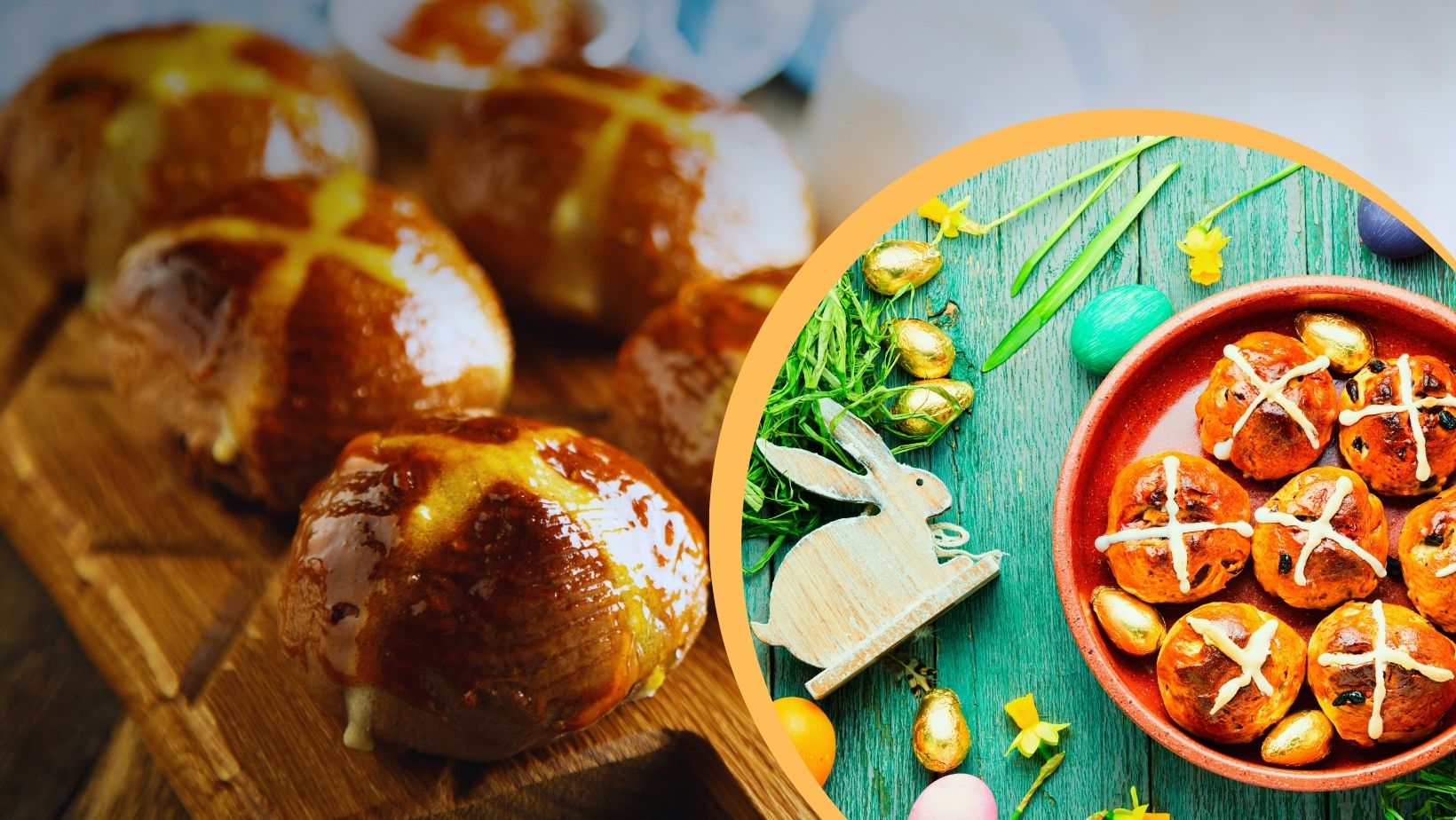
Hot Cross Buns (England): A Sweet Symphony of Tradition
We welcome the renowned Hot Cross Buns as we begin our gastronomic expedition in the heart of England. Particularly celebrated during Easter, these renowned confections occupy a sacred position in the affections of English households due to their centuries-long history. Imagine delectable, fluffy pastries, meticulously baked to an ideal texture and adorned with a cross on top, symbolizing the crucifixion.
However, what truly captivates is not merely their aesthetic allure; rather, it is the harmonious blend of flavors that unfolds within. These buns, infused with a blend of spices including cinnamon, nutmeg, and cloves, emanate a pleasant aroma that engulfs the senses with every mouthful. Furthermore, the inclusion of juicy raisins or currants within the dessert provides a delectable contrast in both texture and flavor while also offering a burst of sweetness.
These Hot Cross Buns exemplify the fundamental tenets of Easter traditions in England, surpassing their status as simple pastries. Not only do they provide a delightful gustatory experience, but they also elicit sentimental recollections of family reunions, cherished moments, and the exuberant essence of Easter celebrations. Indulge in a fragment of tradition and history with each mouthful of these delectable pastries.
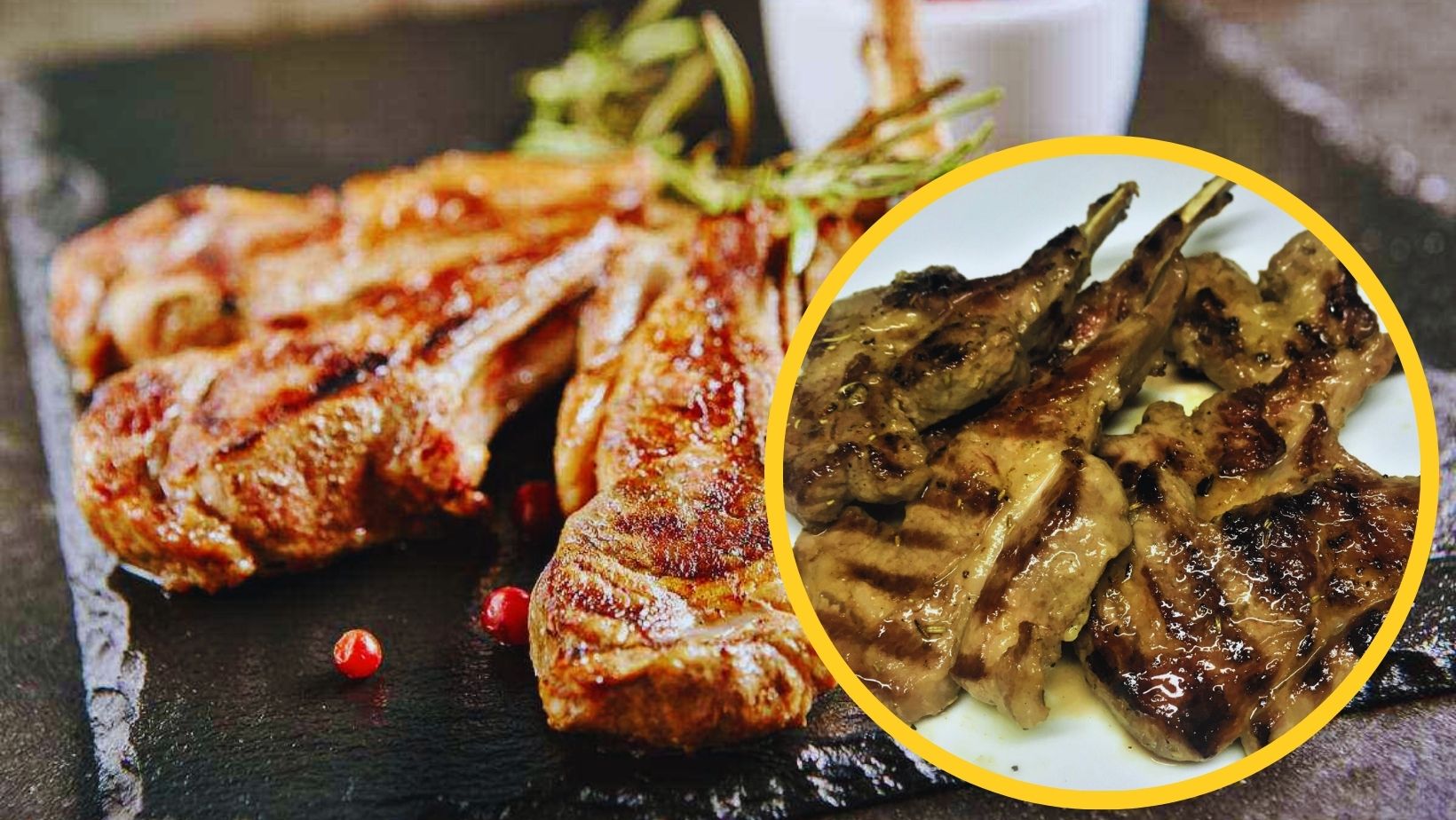
Abbacchio a Scottadito (Italy): A Culinary Ode to Easter
As we immerse ourselves in the Italian gastronomic domain, the tantalizing fragrance of Abbacchio and Scottadito immediately captivates us. This exquisite delicacy, the epitome of Italian gastronomy, assumes a prominent role in Easter festivities, serving as a delightful substitute for meat. In addition to being a culinary tradition, its preparation is a demonstration of Italy’s culinary expertise and culture.
Imagine mouthwatering portions of roasted lamb, expertly seasoned and cooked to tender perfection, with each flavorful morsel enticing you in. A harmonious orchestration of fragrant herbs enhances the flavors, imbuing the flesh with a profoundness of taste that endures well beyond the conclusion of the meal. It is a symphony of flavors that dances on your taste receptors; it is not merely a dish.
In addition to its exceptional culinary merit, Abbacchio a Scottadito possesses a more profound significance. In Italian culture, it embodies the essence of Easter feasts by representing jubilation and renewal. Every morsel honors the exuberant atmosphere of the occasion, recalls customs passed down through generations, and celebrates the abundance of life.
Therefore, by relishing this gastronomic work of art, one is not merely indulging in a meal; rather, one is participating in a longstanding custom that amalgamates tastes, historical significance, and the delight of celebratory assemblies. Abbacchio a Scottadito transcends mere sustenance; it serves as a gastronomic tribute to the diverse heritage of Italy and the holiday season.

Colomba di Pasqua (Italy): A Symbol of Peace and Hope on Easter Tables
Our gastronomic investigation in Italy brings us across the splendid Colomba di Pasqua, an unparalleled treasure amidst the delicacies of Easter. This Easter confection, which bears a resemblance to a dove, is visually captivating and enticing with its divine flavors, which are reminiscent of the renowned panettone. It is a representation of optimism and tranquility, adorning Easter altars with its essence and eliciting delight through indulgence.
Consider a cake characterized by its delicate and airy consistency, which seems to be murmuring anecdotes of joyous occasions and bygone eras. Upon first taste, a harmonious orchestration of flavors captivates the senses with citrus undertones, while the confectionery fruits deliver a delectable burst of flavor with every mouthful. A harmonious combination of components produces a culinary masterpiece.
But Colomba di Pasqua is not merely a cake; it is an Italian cultural icon with profound roots. Its dove-like form, embodying the Easter spirit and conveying the message of rebirth and harmony, represents peace. Families gather around the table to indulge in this delightful confection, serving as a reminder of the enduring promise and the seasonal abundance.
By engaging in the Colomba di Pasqua ritual, one not only indulges in a delectable confection but also wholeheartedly embraces an Easter custom that encapsulates the sentiments of tranquility, optimism, and the pleasures of existence savored in the company of cherished ones. It serves as a delightful reminder that each morsel contains a pinch of blessing and a dash of happiness.

Maamoul Cookies (Lebanon): Delightful Gems of Easter Traditions
We encountered enticing Maamoul cookies during our sojourn in Lebanon. Crafted with affection and adherence to tradition, these delicacies occupy a unique and significant position as Easter pillars in the Middle East. Imagine a set of delicate shortbread cookies that have been meticulously filled with delectable date paste, resulting in a harmonious harmony of flavors that envelops each mouthful.
The opulence of the flavors present in Maamoul cookies serves as evidence of the region’s enduring customs and culinary prowess. The buttery deliciousness of the shortbread combines with the sweetness of the date paste to create a delightful equilibrium. Handed down from generation to generation in preparation for festive events like Easter, this delicacy holds significant cultural and historical value.
In addition to their palatable flavor, Maamoul cookies possess a more profound significance. Family gatherings during Easter exemplify the essence of tenderness as they convene to commemorate love, unity, and the bountiful aspects of existence. Every morsel serves as a poignant reminder of the significance of familial customs, promoting a sense of unity and elation throughout this momentous season.
By partaking in Maamoul Cookies, one not only enjoys a delectable delicacy but also becomes a part of a cultural heritage that commemorates the opulence of flavors, the coziness of traditions, and the priceless moments spent in the company of cherished ones. A delectable excursion that, bite by bite, encapsulates the essence of Easter in the Middle East.
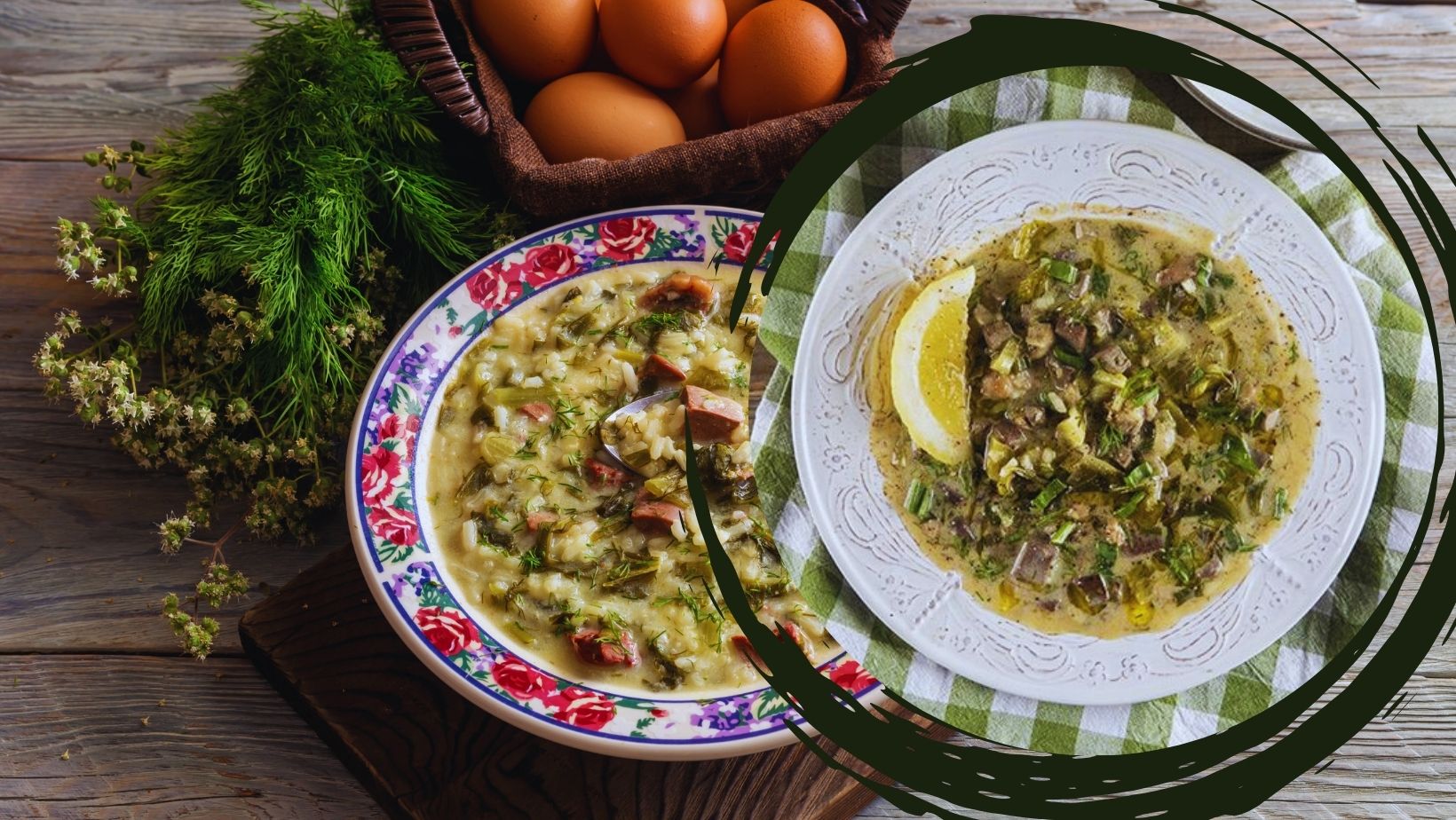
Magiritsa Soup (Greece): A Symbolic Journey of Rebirth
Amidst the rich tapestry of Greek customs, the delectable allure of Magiritsa Soup illuminates Good Friday. This esteemed Greek Easter soup, imbued with cultural significance, is a gastronomic masterpiece that communicates a narrative of rebirth and festivity beyond its mundane constituents.
Sighthounding lamb parts simmering in a saucepan infused with aromatic herbs that tantalize the senses. Incorporate a substantial quantity of eggs and crisp, fresh lettuce, resulting in a harmonious amalgamation of flavors that is both nourishing and comforting.
However, Magiritsa Soup transcends mere gastronomy and delves into an intricate tapestry of tradition and symbolism. This day signifies the shift from a fast to a feast, representing the onset of Easter joy and the process of renewal. Every imbibe symbolizes the cultural significance of food during Greek Easter festivities, with each component carrying a deeper meaning.
During the consumption of Magiritsa broth, one not only indulges in a delectable broth but also participates in a significant ceremonial practice that fosters intergenerational connection and honors the essence of Easter. In addition to being a celebration of rebirth and a flavor of history, it is a testament to Greece’s thriving culinary heritage.

Pastiera Napoletana (Italy): A Divine Symphony of Abundance
The fragrant Pastiera Napoletana, an Easter delicacy that personifies opulence and festivity, greets me upon my return to Italy. Designed to captivate the senses, this gastronomic work of art originates in Naples and is an exquisite fusion of citrus flavors and ricotta cheese.
Imagine a confection that transcends mere sweetness and instead merges zesty citrus undertones with luscious ricotta cheese, resulting in a harmonious composition of flavors that gracefully glide across the palate. The delicate sweetness that persists after the creamy texture melts in your mouth compels you to savor each moment of indulgence.
In addition to being a delicacy, Pastiera Napoletana is a representation of prosperity and delight. The symbolism of its appearance on Easter altars represents the abundance of good fortune in life and the exuberant essence of the holiday. Every individual portion symbolizes a commemoration of culture, tradition, and the joyous atmosphere of intimate gatherings.
Therefore, as one indulges in the splendid Pastiera Napoletana, they are not merely partaking in a dessert but rather experiencing a gustatory sensation of boundless pleasure and prosperity. A gastronomic expedition that encapsulates the very spirit of Easter in Italy, where each mouthful signifies an exaltation of the delicacy and bountiful aspects of existence.
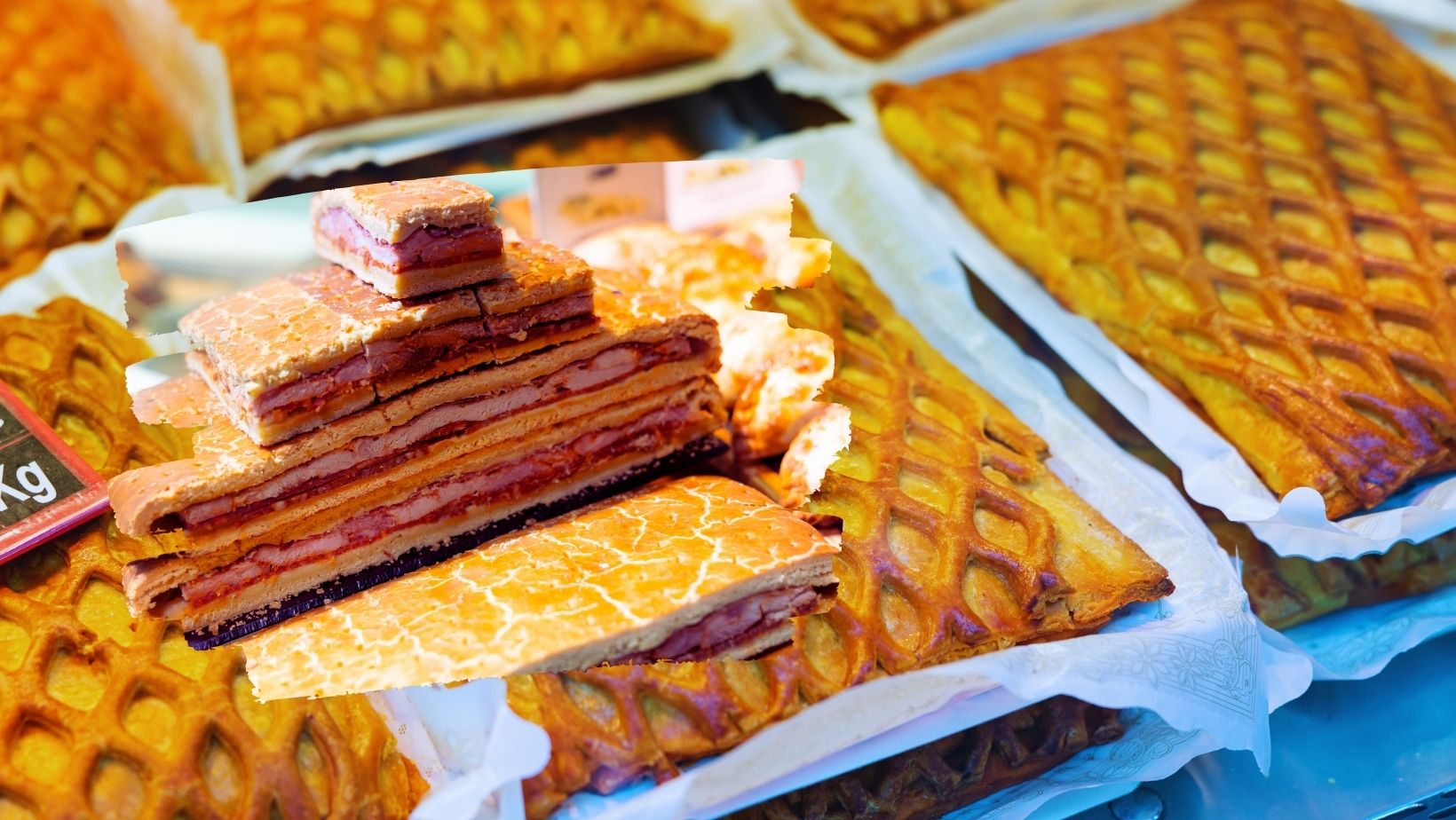
Hornazo (Spain): A Rustic Feast of Spanish Tradition
As we continue on our culinary journey, we arrive in Spain, where the air is filled with the wonderful scent of hornazo. With its robust tastes and rustic appeal, this Spanish meat pie is a beloved Easter treat that calls us to savor a bit of Spanish culture.
Picture a golden, flaky pie crust with a filling of soft, savory ground beef, chorizo, and freshly cooked eggs. A tribute to Spain’s culinary prowess and the skill of crafting meals that evoke warmth and nostalgia, each bite is a symphony of savory pleasure.
However, Hornazo is more than simply a pie—it’s a representation of sharing and feasting. Spanish homes use hornazo on their Easter tables as a symbol of the joy that arises from gathering with others and enjoying a delicious meal. It captures the essence of Easter eating, when each bite is a commemoration of tradition, family, and the bounty of the time of year.
You are thereby immersing yourself in a cultural experience that speaks to the core of Spanish culinary heritage as you relish the delectable joys of Hornazo. During Easter celebrations, it’s a voyage of tastes, customs, and the happiness of uniting to honor life’s gifts.

Pashka (Russia): A Culinary Emblem of Easter Joy
We are currently traveling to Russia, where people celebrate Easter with the joyous Pashka. Similar to a cheesecake but imbued with a unique Russian influence, this Easter delicacy exemplifies the essence of rejuvenation and spiritual elation that characterize this celebratory period.
Imagine a luscious cottage cheese-based cheesecake, adorned with candied fruit for bursts of sweetness and almonds for a delightful crunch. Every milliliter of Pashka is a harmonious composition of luscious flavors and velvety textures that captivate the palate and elicit sentiments of joy and coziness.
Nevertheless, Pashka transcends its status as a mere confection; it embodies a profound symbol of Russian antiquity and culture. The symbolism of its appearance on Easter tables represents the reestablishment of religious devotion and the appreciation of the good fortunes that grace life. Reflecting the cultural heritage and gastronomic abundance of Russian cuisine, Pashka is a beloved Easter delicacy due to its velvety consistency and concentrated flavors.
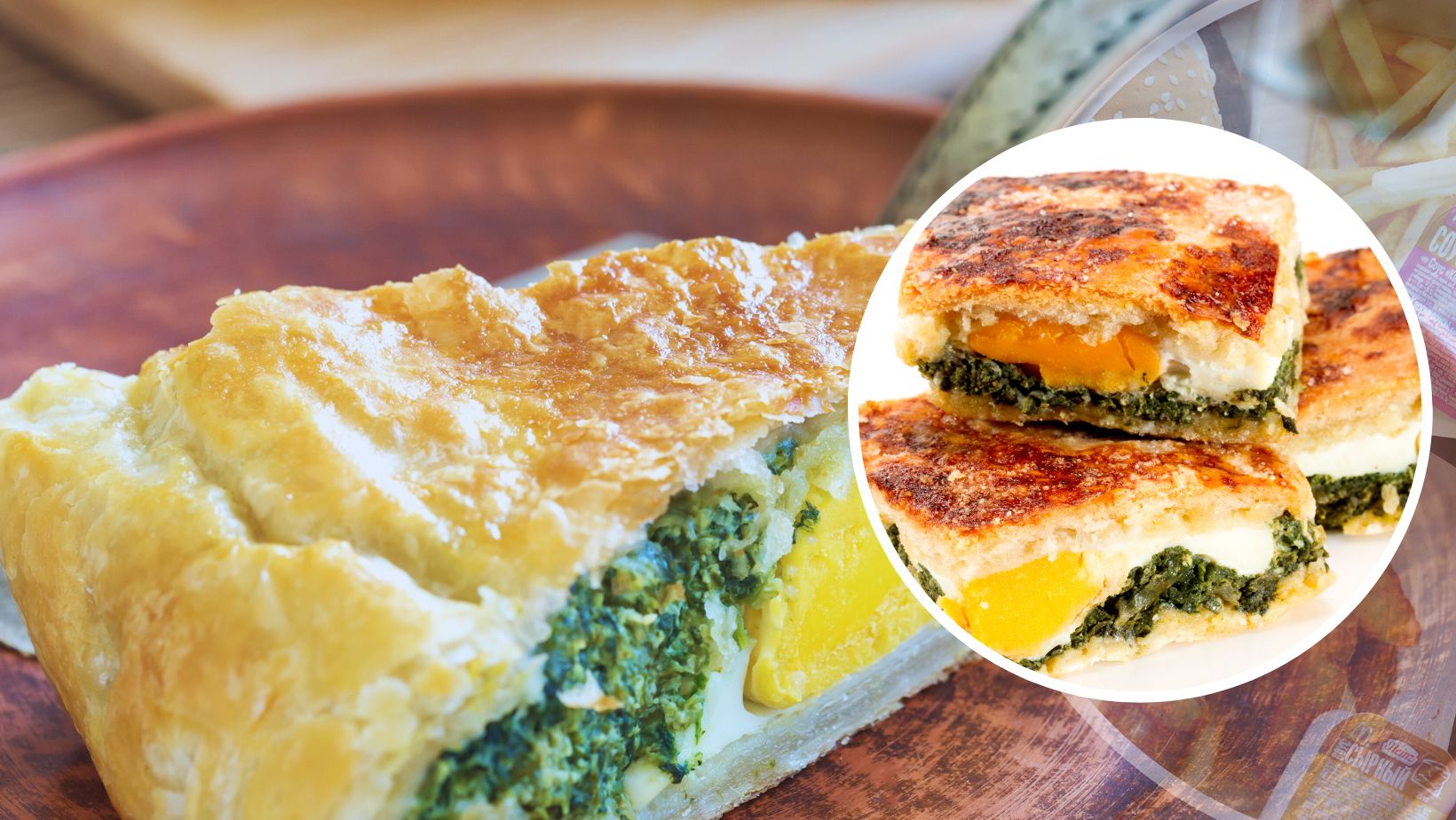
Torta Pascualina (Argentina): A Gastronomic Delight of Easter Feasts
We come across the salty bliss of Torta Pascualina in Argentina, the tasty culmination of our culinary journey. Brimming to the brim with a delicious blend of spinach, cheese, and whole eggs, this spinach pie steals the show during Easter festivities, enticing palates with its rich filling and nutritious flavors.
Imagine a golden crust that is buttery and crispy, encasing a flavorful symphony of perfectly sautéed spinach that combines with creamy cheese and the richness of whole eggs in a harmonious way. Warming the soul and satisfying the senses, every bite of Torta Pascualina is a welcoming hug and a taste of home and heritage.
However, Torta Pascualina represents festivity and is much more than just a pie. In Argentina, its appearance on Easter tables represents the abundant harvest of the season and the festive mood of group feasting. It brings friends and family together to share laughs and delicious meals.
You’re experiencing more than just a meal when you relish the savory sweetness of Torta Pascualina—you’re experiencing the spirit of Easter in Argentina. It’s a culinary delight that represents the warmth of community, the bounty of the season, and the depth of Argentinean culinary heritage.
As we come to the end of our delicious exploration of these delicious Good Friday treats from around the globe, we are reminded of the complex cultural fabric that unites us all via the common language of food. Every meal provides a personal touch to Easter celebrations with its distinct flavors and time-honored customs, signifying the spirit of joy, community, and renewal.
Whether it’s the wholesome richness of Magiritsa Soup or the comforting sweetness of Hot Cross Buns, these foods act as gastronomic representatives of the joyous spirit of Easter and the spirit of Good Friday throughout many countries. They weave tales of family get-togethers, treasured memories, and the joy of sharing a meal together that span continents and decades.
Every mouthful carries not just the flavors but also the rich history, cultural legacy, and deeply held customs that contribute to Easter’s global reputation as a holiday of rebirth and celebration. These sweets represent more than simply food; they also represent harmony, kinship, and the shared enjoyment of sharing abundant and joyous occasions with loved ones.
So let’s keep enjoying these sweet delicacies as a reminder of the universal human experience, in which food serves as a bridge for cross-cultural dialogue, mutual understanding, and the joyful acknowledgment of life’s little pleasures.
About the author:

Priyasa Banerjee is the Secretary of Advocacy Unified Network, an international organization that conducts public policy research and advocacy. She is known for her strategic thinking and ability to build coalitions. She is also an avid supporter of the arts and cultural expression.
